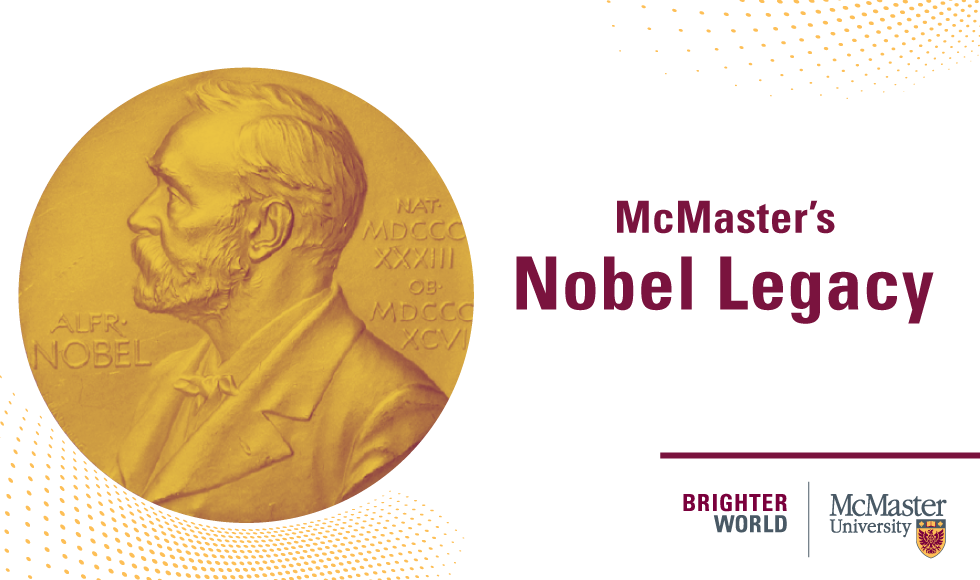Meet McMaster’s Nobel Laureates

The Nobel Prize announcement week provides an opportunity to reflect on the many accomplishments of McMaster's alumni and faculty, and the immense global impact of their work.
BY Jesse Dorey
October 7, 2022
This past week, the Nobel Prize committee honoured the life’s work of researchers from around the globe, celebrating experts and discoveries that have changed the world.
These announcements provide an opportunity to reflect on the many accomplishments of McMaster’s alumni and faculty, and the immense global impact of their work. As the birthplace of problem-based learning and a champion of working across fields of study, McMaster has a long history of fostering the kinds of ideas that have the potential to change the world.
From foundational work in nuclear research and a dedication to global humanitarian aid, to groundbreaking innovations in laser technologies and economic forecasting, our alumni and faculty have numerous ties to the Nobel Prize.
A trailblazer in materials research
Bertram Brockhouse, a professor at McMaster University from 1962 until his retirement in 1984, was instrumental in the development of nuclear research in Canada. His early work led to the discovery of neutron scattering, a finding that made it possible to examine materials using neutron beams developed in a nuclear reactor.
Brockhouse’s work on neutron spectroscopy earned him the Nobel Prize in Physics in 1994. He shared the prize with Clifford G. Shull of MIT.
A giant in the world of economics
Myron Scholes graduated from McMaster University in 1962 with a bachelor’s degree in economics. After completing his undergraduate studies, Scholes attended the University of Chicago, where he received his doctorate in economics. While working at MIT, Scholes met fellow economist Fischer Black, and together the pair devised a mathematical model to determine the value of derivatives that revolutionized the field of options trading.
This model, more commonly known as the Black-Scholes equation, earned Myron Scholes the Nobel Prize in Economics in 1997. Scholes shared the award with Robert Merton, who adapted the equation for use in other areas of finance.
A pioneer in laser technology
Donna Strickland graduated from McMaster University’s Faculty of Engineering in 1981 with a bachelor’s degree in engineering physics. After completing her undergraduate studies, Strickland attended the University of Rochester where, alongside her doctoral supervisor Gérard Mourou, she discovered a way to create high-intensity laser pulses.
This technique, called Chirped Pulse Amplification, earned Donna Strickland the Nobel Prize in Physics in 2018, despite the fact that it was her first-ever published scientific paper. She shared the award with Mourou.
A doctor with a cause
James Orbinski graduated from McMaster University’s Faculty of Health Sciences with a M.D. in 1990. A short time later, Orbinski began working with Médecins Sans Frontières (MSF), a global humanitarian organization that he would go on to lead from 1998 until 2001. In 1999, MSF was awarded the Nobel Peace Prize, and Orbinski accepted the award on the organization’s behalf.


